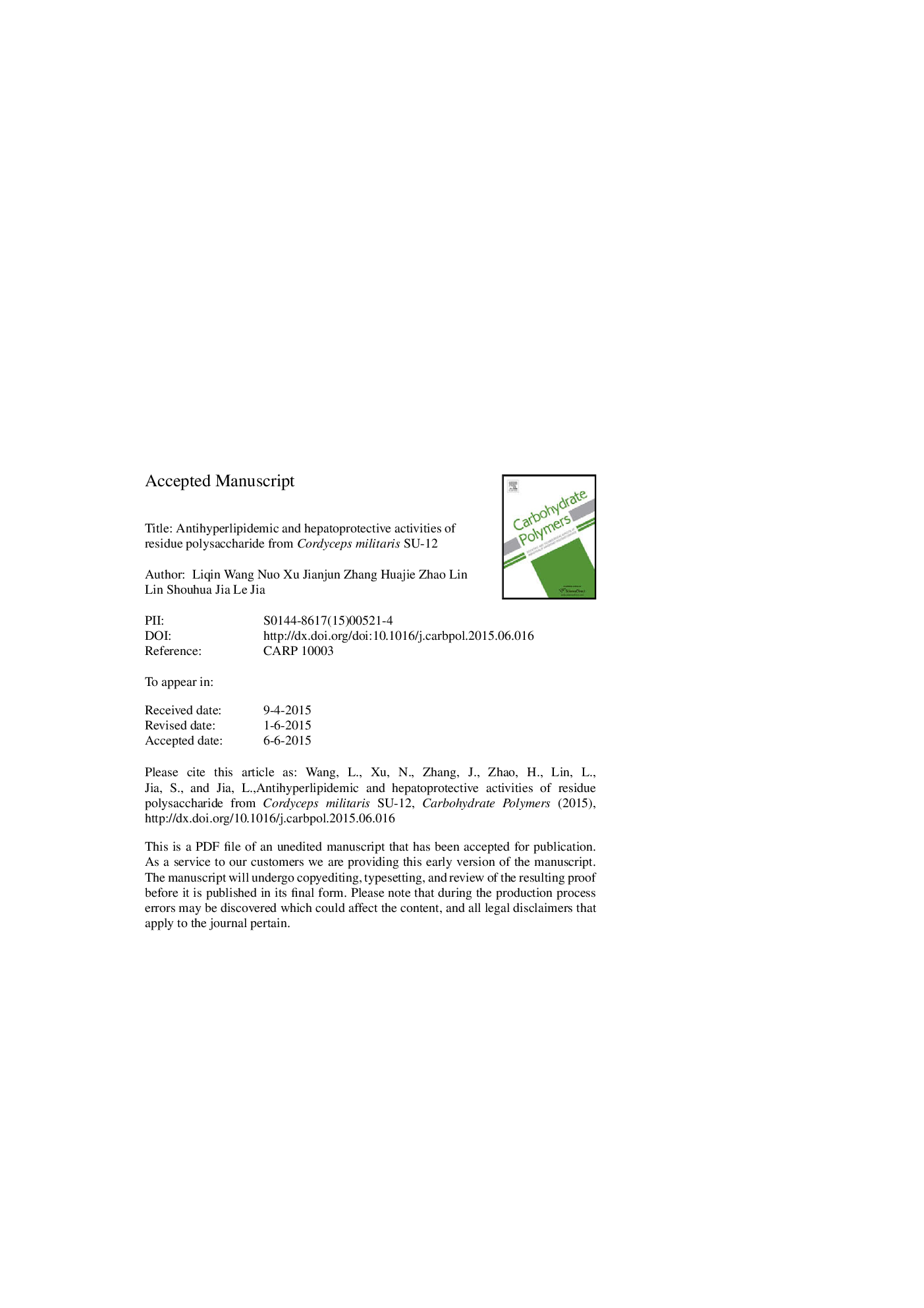| Article ID | Journal | Published Year | Pages | File Type |
|---|---|---|---|---|
| 7787811 | Carbohydrate Polymers | 2015 | 24 Pages |
Abstract
Cordyceps militaris has been artificially cultivated in China, and the great amounts of produced medium residue were discarded after the harvest. The aims of this work were to analyze the structure of the residue polysaccharide (RPS) of C. militaris SU-12, and to investigate the pharmacological effects of RPS on lipid metabolism and oxidative stress. RPS was composed of glucose, arabinose and mannose with a ratio of 62:1.6:1 by gas chromatography analysis, and the Mw (weight-average molecular weight), Mn (number-average molecular weight) and Mz (z-average molecular weight) of RPS were 2.86Â ÃÂ 103, 6.85Â ÃÂ 102, and 1.97Â ÃÂ 104Â Da, respectively. The mice experiments demonstrated that RPS could reduce the levels of blood and liver lipid, and improve the glutamate pyruvate transaminase and antioxidant activity. The histopathological observations of mice livers indicated that RPS could attenuate liver cell injury. Results suggest that the RPS might be used as a potential antihyperlipidemic, hepatoprotective and antioxidant product.
Related Topics
Physical Sciences and Engineering
Chemistry
Organic Chemistry
Authors
Liqin Wang, Nuo Xu, Jianjun Zhang, Huajie Zhao, Lin Lin, Shouhua Jia, Le Jia,
